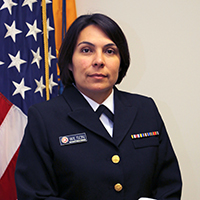November is National Diabetes Awareness Month, a great time to raise awareness of the connection between diabetes and cardiovascular disease (CVD). Diabetes is one of the major risk factors for the development of CVD. According to the Centers for Disease Control and Prevention (CDC) , American Indian/Alaska Native (AI/AN) people have the highest rates of diagnosed diabetes of any racial/ethnic group in the United States. The CDC also reports that CVD is the leading cause of death among AI/AN people. Compared to individuals without diabetes, those with diabetes have a 2 to 4 fold increased risk of dying from CVD.
Type 2 diabetes, the most common form of diabetes, is a complex disease in which the body becomes resistant to its insulin and eventually is no longer able to produce sufficient amounts. This leads to an increase in blood sugar levels which can damage the arteries. Damage to the arteries can lead to high blood pressure and the build-up of plaque. Diabetes also increases cholesterol, further contributing to plaque build-up. Combined, these can lead to blockages that can cause strokes and heart attacks.
Cardiovascular Disease Risk Factors
- Diabetes
- High Blood Pressure
- High Cholesterol
- Smoking
- Overweight/Obesity
- Lack of Physical Exercise
- Age
- Family History
The good news is the development of CVD in people with diabetes can be prevented or significantly slowed. Controlling glucose, especially in the early years of diabetes, as well as controlling blood pressure, cholesterol, stopping smoking, and engaging in lifestyle changes, including a healthy diet and exercise, all decrease CVD risk.
The combined efforts of clinicians and SDPI grantees across the country have produced remarkable improvements in clinical outcomes for AI/AN people with diabetes over the last 20 years. Average LDL (or “bad”) cholesterol levels have decreased from 118mg/dL to 93mg/dL, well below the target of 100mg/dL. Excellent blood pressure control has been maintained at an average of approximately 134/82. Further, diabetes rates in adults have been fairly stable since 2011, and the obesity and diabetes rates in youth have not increased in more than a decade. Rates of new cases of diabetic eye disease and diabetes-related kidney failure have both dropped by over 50%. As a result, significantly fewer people are losing their eyesight or requiring dialysis, due to improvements in diabetes treatment and education.
The IHS Division of Diabetes Treatment and Prevention (DDTP) has created protocols for hypertension and cholesterol management and continues to develop evidence-based, culturally-relevant materials to assist providers in educating patients and communities about diabetes, diabetes prevention, and diabetes-related complications. The Special Diabetes Program for Indians (SDPI) has allowed grantees, tribal leaders, and IHS to develop innovative, community-driven approaches to providing high-quality diabetes prevention and treatment services for AI/AN people.
Ongoing collaborative efforts to provide excellent diabetes care across the Indian Health System will further this progress to prevent diabetes and its complications, including CVD.
Related Content:
IHS Navajo Area Launches Prediabetes Awareness Campaign
Celebrating Successes in Diabetes Prevention for Native Americans and Continuing the Work



